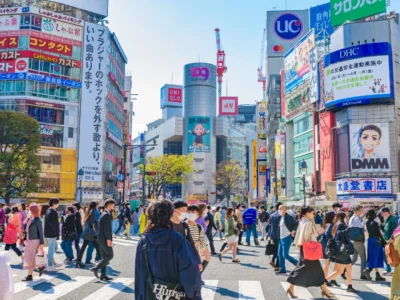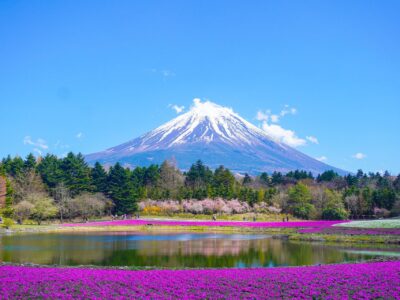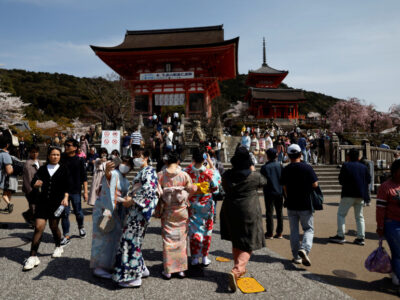
At Mount Koya, 50 temples serve as Shukubo (temple lodgings) for visitors, making it one of the best places to experience for the tourists
Mountain tops covered with dense clouds and fog, deep, guttural chants of monks, all pervasive sense of calm and serenity, and a land filled with folklores and culture. This is the place where the sacred traditions of the past gone by can be relived in the present. Mount Koya or Koyasan, as it is more commonly known in Japanese, is the centre of Shingon Buddhism, one of the major schools of Buddhism in Japan.
“Mount Koya was sincerely one of the highlights of our, once-in-a-lifetime, trip to Japan,” Bea and Phil, a couple that goes by the name The World Chasers on social media site Instagram, tell India Outbound. “It is with fondness that we remember some of the moments we experienced there. Although relatively popular among the tourists, it is a place hidden in a high plain surrounded by mountain peaks and often overlooked by visitors to the nearby cities of Osaka or Nara. Mount Koya is a place of meditation and tranquillity,” the couple writes.
Kobo Daishi (Kukai) was the founder of the Shingon Buddhism and established Mount Koya as the headquarters of the sect. “The whole vibe around the place was very much about Kobo Daishi, after all he was the one who established the whole complex,” says Himanshi Shah, a travel photographer. “So I walked around learning about him. I did read about him on the internet, but it was so much more different when I got to learn it from people who have a very strong faith in him and values he preached,” Shah tells India Outbound.
The sacred site is hidden deep in the mountains, located in the Wakayama Prefecture, south of Osaka, making it one of the most easily accessible destinations to reach, which according to the Japan Tourism has largely contributed to a growth in visitors numbers. Despite the rise in tourism, Mount Koya remains a rewarding destination for travellers interested in Buddhism, history, traditional culture, and nature.
At Mount Koya, 50 temples serve as Shukubo (temple lodgings) for visitors, making it one of the best places to experience for the tourists, says Japan Tourism. Unlike in other parts of Japan, the temples on Koyasan are accustomed to foreign guests and can be reserved relatively easily through websites or via the tour operators. The typical cost for a stay is around Yen 9,000-15,000 per person, per night and includes dinner and breakfast. Tourists need to remember that most temples accept cash only.
The tourists prefer the option to stay onsite as it allows them to get the full cultural and traditional experience. “We stayed at a shukubo,” recount Bea and Phil. “More precisely, we stayed at Eko-in Temple, one of the closest temples to Okunoin cemetery. We stayed in a traditional Japanese tatami room, beautifully decorated and close to the building where the morning prayers were held. Our rooms were spacious, and all our meals were served by the monks in the room. You could see the monks’ dedication and humbleness through their cuisine and overall approach. We had an amazing view over the temple and the relaxing, carefully cared for gardens. The temple itself is simply stunning, you can almost feel the ancient rituals and teachings deeply embedded into the wooden walkways. We would only say we should have stayed for more time and not just one night,” they add.
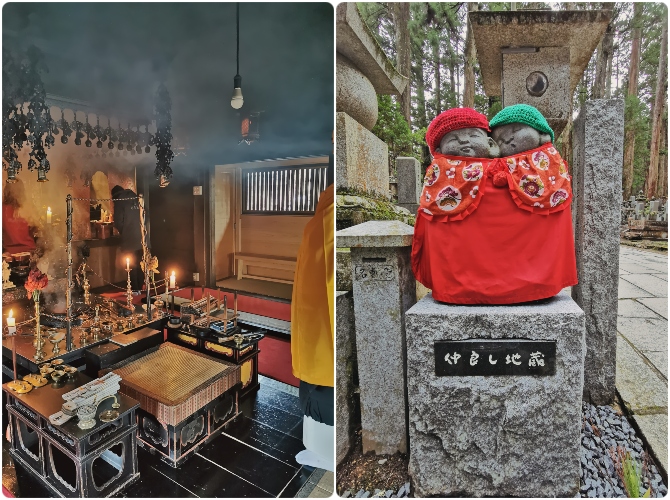
Kobo Daishi (Kukai) was the founder of the Shingon Buddhism and established Mount Koya as the headquarters of the sect (Photo: The World Chasers)
But even for people on a pocket friendly budget, Mount Koya is diverse in its accommodations, to make sure that people with varying budgets can visit the sect. “I spent two nights there and I stayed in a hostel, because the temple lodge prices were a bit too high for me,” says Shah. “The people were incredible. The owner of the hostel was wearing a shirt which has something in Hindi written on it, and he instantly said to me, ‘oh you’re Indian’, and he served me with a meal which can honestly qualify as a traditional Indian thali,” Shah adds.
Mount Koya’s uniqueness also lies in the fact that it is diverse in how it serves and treats its visitors, to make them feel comfortable. For Indian tourists, the biggest plus, is the fact that vegetarian food is available in abundance. “I’m a vegetarian and there were food options for everyone, and everything is available, from vegan to vegetarian to of course fish. I ate in the hostel and I ate outside in restaurants and there were these really quaint cafes that could provide you with typical Japanese café food, like veg sushi,” recounts Shah.
The World Chasers describe their experience in two words, ‘humble hospitality’. Japan is known worldwide for its polite and warm hospitality to foreigners and that same goes for the residents at Koyasan, the monks will always approach you with a polite smile and a courteous bow, they say. The couple points out that most people on Mount Koya are connected to the Shingon sect. “They all transmitted a sense of inner tranquillity and offered friendly and generous hospitality. You would expect to be treated as a foreigner, but everyone was helpful, and we were included in every ritual, right from the start. Besides, through their careful approach, we never felt there was a language barrier, even if English wasn’t even spoken,” says the couple.
If you ever wondered what it would be like to live a monk’s life, Koyasan gives you the authentic first-hand experience as visitors who stay can start the day by attending the morning prayers, consume the pure vegetarian monks’s cuisine (shojin-ryori), attend meditation sessions and also experience the hot spring in the temple.
The main attraction and the centre of all activities at Mount Koya is ‘Okunoin’ Japan’s largest cemetery, the site of Kobo Daishi’s mausoleum. At night the monks take visitors on a tour of the cemetery and guide them through the rich history of the sect.
“It was still dusk and, under the threat of rain, we entered the cemetery following one of the monks. The poorly lit paths snake through the eerie graves of thousands. We stopped frequently, while the monk explained the daily life of monks, history of Mount Koya and some of the teachings of Shingon Esoteric Buddhism. We followed some of the rituals to visit the most sacred part of Okunoin, the mausoleum of Kobo Daishi (Kukai). We slowly made our way, through sacred ground, towards the mausoleum where we had time to meditate, while listening to mantras and deep chanting. A deep silence followed us on our way back, almost like it was embedded in the shadows surrounding us,” say World Chasers.
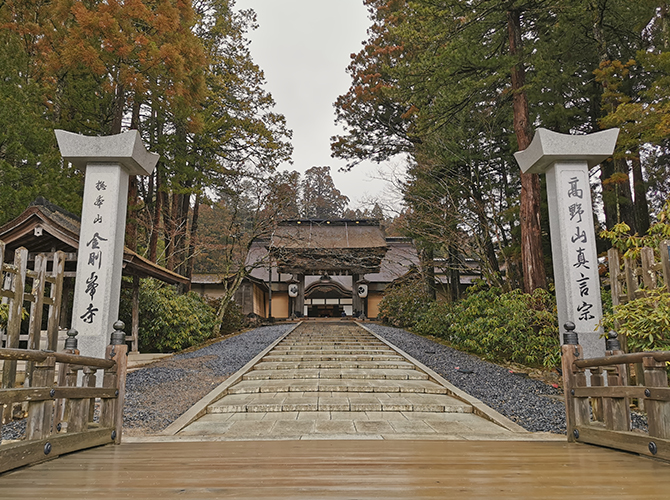
Japan is known worldwide for its polite and warm hospitality to foreigners and that same goes for the residents at Koyasan
“The place where Kobo Daishi lays today, is the place where he used to meditate and the main temple stands right next to the park. They give you a whole tour in English and tell you about the beliefs of the sect. The monks believe that Kobo Daishi hasn’t really expired and instead is still in deep meditation, waiting for Buddha to come back,” says Shah.
In the morning, the monks prepare an elaborate feast, they bless it and leave at the mausoleum. “You can’t actually go near the mausoleum. In the morning, you can pray with the monks, but you must not take any photos,” says Shah.
The mountains are filled with stories. The folklore attached to the Kobo Daishi are as enchanting, as the wonderment in monks’ voices while telling the stories of their great sect founder. The story goes, when Monk Kukai had just passed away, a few monks decided to open his grave, and they found him perfectly intact, and healthy. There was no rotting, in fact he was glowing. “That’s the reason the sect till this day believes that Monk Kukai is in an eternal state of meditation,” says Shah. Another reason for the belief could be that Kobo Daishi had stopped eating and drinking three months prior to his passing and he went into a deep state of meditation.
Many locals choose to be buried near the meditating monk and many parents who lose their children, decide to bury their children there as well.









